Blog
- Introduction to Microbial Growth Media Preparation
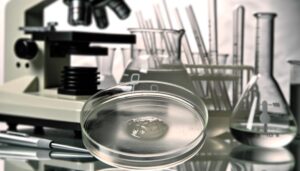 Harnessing the power of microbial growth media preparation requires careful selection of ingredients and sterilization methods to cultivate thriving cultures.
Harnessing the power of microbial growth media preparation requires careful selection of ingredients and sterilization methods to cultivate thriving cultures. - Environmental Impact Assessment Report
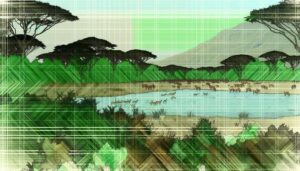 Identifying potential environmental consequences, an EIA report is crucial for mitigating ecological damage, but what does the process entail?
Identifying potential environmental consequences, an EIA report is crucial for mitigating ecological damage, but what does the process entail? - EIA Consultancy Services
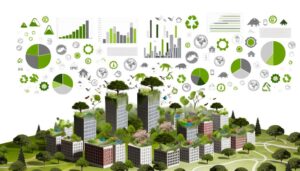 Crafting a comprehensive environmental impact assessment is crucial to ensuring project success, but where do you even begin?
Crafting a comprehensive environmental impact assessment is crucial to ensuring project success, but where do you even begin? - Environmental Impact Assessment Methodology
 Mastering environmental impact assessment methodology is crucial to mitigating project risks, but what steps must you take to get it right?
Mastering environmental impact assessment methodology is crucial to mitigating project risks, but what steps must you take to get it right? - EIA for Infrastructure Projects
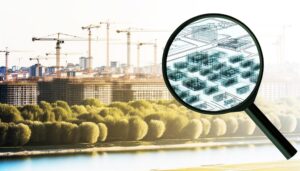 Assessing environmental implications, a crucial step in infrastructure project planning, reveals the hidden costs of development and unveils sustainable solutions.
Assessing environmental implications, a crucial step in infrastructure project planning, reveals the hidden costs of development and unveils sustainable solutions. - Environmental Impact Assessment Software
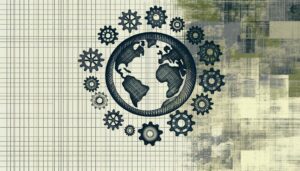 Cutting-edge EIA software streamlines environmental evaluations, but how can it transform your project's sustainability and decision-making processes?
Cutting-edge EIA software streamlines environmental evaluations, but how can it transform your project's sustainability and decision-making processes? - Aseptic Techniques in Microbiology for Beginners
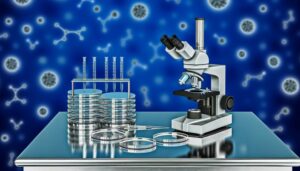 Take the first step into the world of microbiology, where aseptic techniques hold the key to unlocking precise and reliable results.
Take the first step into the world of microbiology, where aseptic techniques hold the key to unlocking precise and reliable results. - How to Use a Microscope in Microbiology
 Focus on the fascinating world of microbiology by mastering microscope techniques to uncover the secrets of microorganisms.
Focus on the fascinating world of microbiology by mastering microscope techniques to uncover the secrets of microorganisms. - Beginner's Guide to Gram Staining
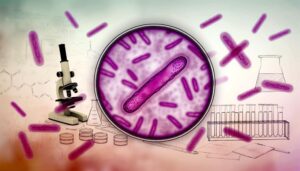 Journey into the world of microbiology and uncover the secrets of Gram staining, a fundamental technique for identifying bacteria.
Journey into the world of microbiology and uncover the secrets of Gram staining, a fundamental technique for identifying bacteria. - Introduction to Microbial Culture Techniques
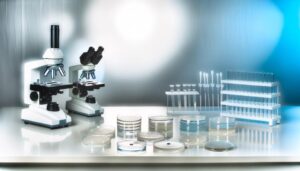 Witness the mighty microbes up close as we delve into the fascinating world of microbial culture techniques, where breakthroughs await.
Witness the mighty microbes up close as we delve into the fascinating world of microbial culture techniques, where breakthroughs await. - Basic Microbiology Lab Techniques for Beginners
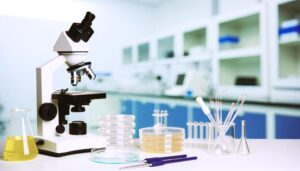 Harnessing the secrets of microbiology starts with mastering the fundamentals of aseptic technique, agar plate preparation, and molecular identification methods.
Harnessing the secrets of microbiology starts with mastering the fundamentals of aseptic technique, agar plate preparation, and molecular identification methods. - Parts of a Microscope With Functions and Diagram
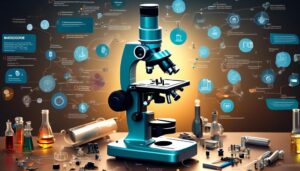 Are you ready to take a closer look at the inner workings of a microscope? Well, hold onto your lab coat because we’re about to …
Are you ready to take a closer look at the inner workings of a microscope? Well, hold onto your lab coat because we’re about to …Parts of a Microscope With Functions and Diagram Read More »
- Animal Cell Structure
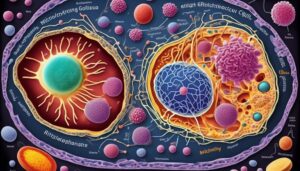 Did you know that the average animal cell is only about 10 to 30 micrometers in size? That’s smaller than the width of a human …
Did you know that the average animal cell is only about 10 to 30 micrometers in size? That’s smaller than the width of a human … - Plant Cell Structure
 Have you ever stopped to marvel at the intricate design of a plant? Well, brace yourself for an even more astonishing revelation – the structure …
Have you ever stopped to marvel at the intricate design of a plant? Well, brace yourself for an even more astonishing revelation – the structure … - Abiotic Factors- Definition, Types, Examples and Responses
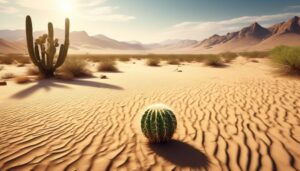 Are you aware of the invisible forces that shape the world around us? Picture a dense forest teeming with life, where sunlight filters through the …
Are you aware of the invisible forces that shape the world around us? Picture a dense forest teeming with life, where sunlight filters through the …Abiotic Factors- Definition, Types, Examples and Responses Read More »
- Taproot Vs. Fibrous Root: Key Differences, Examples
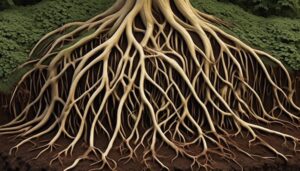 Imagine you’re standing in a lush garden, surrounded by a variety of plants. As you observe their roots, you notice that some plants have thick, …
Imagine you’re standing in a lush garden, surrounded by a variety of plants. As you observe their roots, you notice that some plants have thick, …Taproot Vs. Fibrous Root: Key Differences, Examples Read More »
- Light Microscope- Definition, Principle, Types, Parts
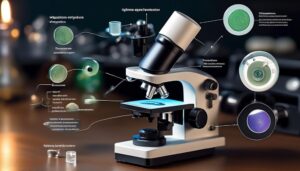 Are you ready to embark on a journey of discovery, as we shine a light on the fascinating world that can be unveiled through a …
Are you ready to embark on a journey of discovery, as we shine a light on the fascinating world that can be unveiled through a …Light Microscope- Definition, Principle, Types, Parts Read More »
- Celsius Vs. Fahrenheit Scale- Differences With Examples
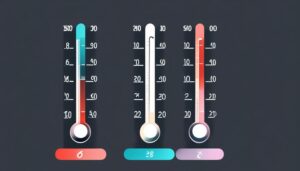 Are you tired of the constant debate between the Celsius and Fahrenheit scales? It’s time to settle the score once and for all and finally …
Are you tired of the constant debate between the Celsius and Fahrenheit scales? It’s time to settle the score once and for all and finally …Celsius Vs. Fahrenheit Scale- Differences With Examples Read More »
- The Wobble Hypothesis: Definition, Statement, Significance
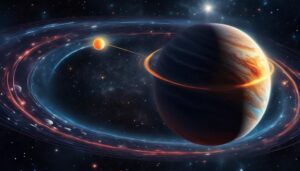 Are you ready to embark on a journey into the captivating world of the Wobble Hypothesis? Just like a hidden treasure waiting to be discovered, …
Are you ready to embark on a journey into the captivating world of the Wobble Hypothesis? Just like a hidden treasure waiting to be discovered, …The Wobble Hypothesis: Definition, Statement, Significance Read More »
- Laboratory Safety Symbols, Signs, and Meanings
 Are you ready to unlock the secret language of laboratory safety? Picture yourself as a detective, deciphering hidden messages that hold the key to a …
Are you ready to unlock the secret language of laboratory safety? Picture yourself as a detective, deciphering hidden messages that hold the key to a … - Photosynthesis Process
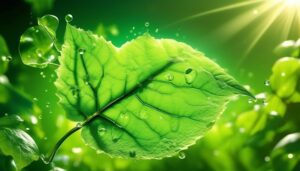 As you step outside on a sunny day, have you ever wondered how plants are able to harness the power of sunlight to produce energy? …
As you step outside on a sunny day, have you ever wondered how plants are able to harness the power of sunlight to produce energy? … - E. Coli (Escherichia Coli)- an Overview
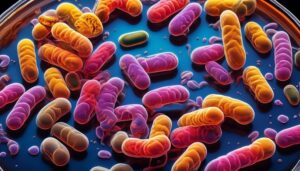 Have you ever wondered about the mysterious and captivating world of E. coli? Prepare to be amazed as we take you on a journey through …
Have you ever wondered about the mysterious and captivating world of E. coli? Prepare to be amazed as we take you on a journey through … - Instruments Used in Microbiology Lab
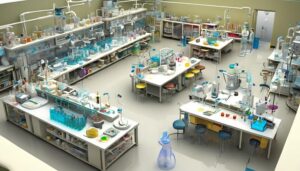 Imagine stepping into a microbiology lab, where the air is filled with the faint scent of disinfectant and the hum of machines. As you observe …
Imagine stepping into a microbiology lab, where the air is filled with the faint scent of disinfectant and the hum of machines. As you observe … - Pyramid of Energy- Definition, Levels, Importance, Examples
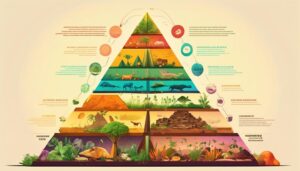 Are you aware that only about 10% of the energy from one trophic level is passed on to the next level in an ecosystem? This …
Are you aware that only about 10% of the energy from one trophic level is passed on to the next level in an ecosystem? This …Pyramid of Energy- Definition, Levels, Importance, Examples Read More »
- Definition, Formula, Table, Finding P-value, Significance
 Are you tired of scratching your head in confusion every time someone mentions p-values? Well, fret no more, because in this article, we have got …
Are you tired of scratching your head in confusion every time someone mentions p-values? Well, fret no more, because in this article, we have got …Definition, Formula, Table, Finding P-value, Significance Read More »
- Krebs Cycle: Location, Enzymes, Steps, Products, Diagram
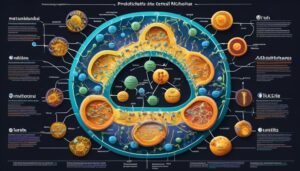 Brace yourself for a journey through the intricate pathways of energy production, as we explore the location, enzymes, steps, products, and even a diagram of …
Brace yourself for a journey through the intricate pathways of energy production, as we explore the location, enzymes, steps, products, and even a diagram of …Krebs Cycle: Location, Enzymes, Steps, Products, Diagram Read More »
- Analogous Structures: Definition, Examples, Significances
 Did you know that despite the vast diversity of life on Earth, there are numerous instances where different species have evolved similar structures to perform …
Did you know that despite the vast diversity of life on Earth, there are numerous instances where different species have evolved similar structures to perform …Analogous Structures: Definition, Examples, Significances Read More »
- Thioglycollate Broth- Composition, Principle, Preparation
 So, you think you know all there is to know about microbiology, huh? Well, brace yourself, because we’re about to uncover the fascinating world of …
So, you think you know all there is to know about microbiology, huh? Well, brace yourself, because we’re about to uncover the fascinating world of …Thioglycollate Broth- Composition, Principle, Preparation Read More »
- Vacuoles- Definition, Structure, Types, Functions
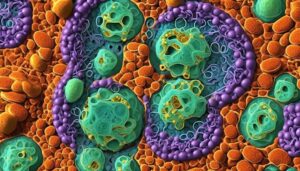 Step into the world of these captivating organelles as we explore their definition, structure, types, and functions. From plant cells to fungi and protists, vacuoles …
Step into the world of these captivating organelles as we explore their definition, structure, types, and functions. From plant cells to fungi and protists, vacuoles …Vacuoles- Definition, Structure, Types, Functions Read More »
- Biuret Test for Protein- Principle, Procedure, Results, Uses
 Imagine yourself in a laboratory, carefully pipetting solutions and observing a mesmerizing transformation of colors. The Biuret Test for Protein is a fascinating biochemical test …
Imagine yourself in a laboratory, carefully pipetting solutions and observing a mesmerizing transformation of colors. The Biuret Test for Protein is a fascinating biochemical test …Biuret Test for Protein- Principle, Procedure, Results, Uses Read More »
- Monocot Vs. Dicot Seed Comparison
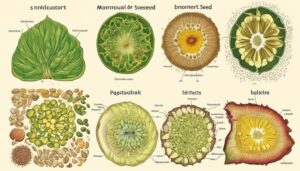 By chance, have you ever wondered about the contrasting features between monocot and dicot seeds? Well, in this discussion, we will uncover the fascinating details …
By chance, have you ever wondered about the contrasting features between monocot and dicot seeds? Well, in this discussion, we will uncover the fascinating details … - Vascular Vs. Non-Vascular Plants
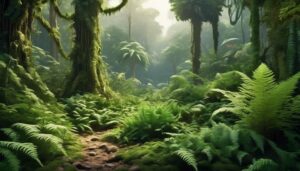 Are you ready to embark on a fascinating journey into the world of plants, where the battle between vascular and non-vascular species unfolds? As you …
Are you ready to embark on a fascinating journey into the world of plants, where the battle between vascular and non-vascular species unfolds? As you … - Decomposers- Definition, Types, Examples, Decomposition
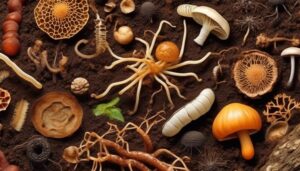 As you venture into the intricate world of decomposers, prepare to uncover the hidden champions that silently orchestrate the cycle of life. These remarkable organisms …
As you venture into the intricate world of decomposers, prepare to uncover the hidden champions that silently orchestrate the cycle of life. These remarkable organisms …Decomposers- Definition, Types, Examples, Decomposition Read More »
- Plant Cell Vs. Animal Cell Major Differences
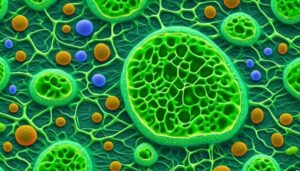 Are you ready to take a deep dive into the intricate world of cells? Just as two sides of a coin, plant cells and animal …
Are you ready to take a deep dive into the intricate world of cells? Just as two sides of a coin, plant cells and animal … - Eubacteria- Definition, Characteristics, Structure, Types, …
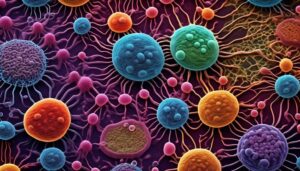 Are you ready to unlock the doorway to the hidden world of Eubacteria? Prepare to step into a realm where microscopic organisms reign supreme, their …
Are you ready to unlock the doorway to the hidden world of Eubacteria? Prepare to step into a realm where microscopic organisms reign supreme, their …Eubacteria- Definition, Characteristics, Structure, Types, … Read More »
- Streak Plate Method- Principle, Types, Methods, Uses
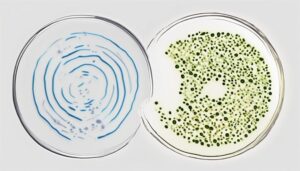 Have you ever wondered how microbiologists are able to isolate and study pure cultures of bacteria and yeasts? Well, one theory suggests that the streak …
Have you ever wondered how microbiologists are able to isolate and study pure cultures of bacteria and yeasts? Well, one theory suggests that the streak …Streak Plate Method- Principle, Types, Methods, Uses Read More »
- Biotic Factors explained
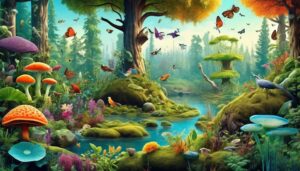 Are you aware of the intricate dance of life that occurs within ecosystems? It’s fascinating to discover how different organisms interact with one another and …
Are you aware of the intricate dance of life that occurs within ecosystems? It’s fascinating to discover how different organisms interact with one another and … - Voluntary Vs. Involuntary Muscles
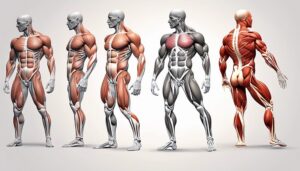 Are you curious about the intricate workings of your body? Well, let’s start with a real-life example. Imagine you’re lifting a heavy box, feeling the …
Are you curious about the intricate workings of your body? Well, let’s start with a real-life example. Imagine you’re lifting a heavy box, feeling the … - Cold-Blooded Vs. Warm-Blooded AnimalsCurious about the contrasting characteristics of cold-blooded and warm-blooded animals? Delve into the world of these fascinating creatures and uncover the sixteen key differences that …
- HPLC: Principle, Parts, Types, Uses, Diagram
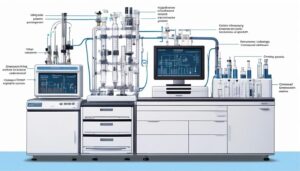 Are you curious about the inner workings of High Performance Liquid Chromatography (HPLC)? Well, get ready to uncover the principle, parts, types, uses, and even …
Are you curious about the inner workings of High Performance Liquid Chromatography (HPLC)? Well, get ready to uncover the principle, parts, types, uses, and even … - Characteristics of Threatened Species
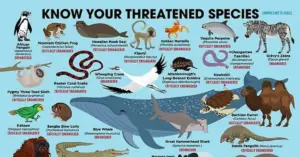 Although a large number of factors can make a species vulnerable to extinction, conservation biologists have observed that the species most vulnerable to extinction belong …
Although a large number of factors can make a species vulnerable to extinction, conservation biologists have observed that the species most vulnerable to extinction belong … - What does genetic drift cause?
 Define genetic drift in biology In wild populations, there are always relatively common and relatively rare alleles. Small populations are at risk of losing genetic …
Define genetic drift in biology In wild populations, there are always relatively common and relatively rare alleles. Small populations are at risk of losing genetic … - Demographic and environmental stochasticity
 Demographic stochasticity Population stochasticity (also known as demographic change) refers to random variations in the demographic characteristics of a population (eg. sex ratios, birth rate, …
Demographic stochasticity Population stochasticity (also known as demographic change) refers to random variations in the demographic characteristics of a population (eg. sex ratios, birth rate, … - What is population bottleneck?
 In some taxa, such as butterflies, annuals, and amphibians, population size varies dramatically from generation to generation. In recent years, populations may be so large …
In some taxa, such as butterflies, annuals, and amphibians, population size varies dramatically from generation to generation. In recent years, populations may be so large … - What causes outbreeding depression?
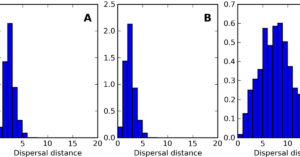 Large populations have many ecological, behavioral, and physiological mechanisms that prevent hybridization, the production of offspring among genetically distant taxa, whether they be individuals of …
Large populations have many ecological, behavioral, and physiological mechanisms that prevent hybridization, the production of offspring among genetically distant taxa, whether they be individuals of … - Heterosis and inbreeding depression
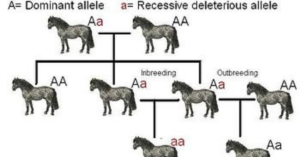 Mating among closely related individuals, which occurs in small populations, often results in lower reproductivesuccess and weaker offspring. In large populations, a variety of instinctive …
Mating among closely related individuals, which occurs in small populations, often results in lower reproductivesuccess and weaker offspring. In large populations, a variety of instinctive … - What is thermal pollution and what causes it?
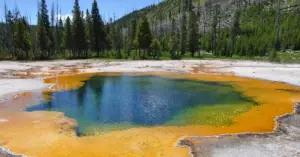 Thermal pollution describes localized human-induced temperature changes in the natural world. Aquatic ecosystems represent one of the ecosystems most vulnerable to thermal pollution. For example, …
Thermal pollution describes localized human-induced temperature changes in the natural world. Aquatic ecosystems represent one of the ecosystems most vulnerable to thermal pollution. For example, … - Essay about noise pollution
 Many people find a sense of freedom when they are in natural surroundings, with peace and quiet facilitating a much-needed connection to nature. These experiences …
Many people find a sense of freedom when they are in natural surroundings, with peace and quiet facilitating a much-needed connection to nature. These experiences … - What is a light pollution?
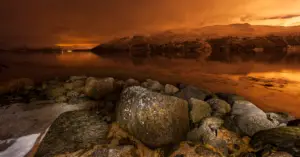 Light pollution describes the addition of excessive, prolonged, or poorly designed artificial light to the natural world. As a consequence of an increasingly industrialized world, …
Light pollution describes the addition of excessive, prolonged, or poorly designed artificial light to the natural world. As a consequence of an increasingly industrialized world, … - Reason for soil pollution
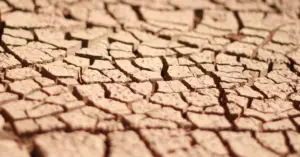 Soil pollution occurs when the soil encounters foreign chemicals and other pollutants. This type of pollution is often associated with industrial activities that extract agricultural …
Soil pollution occurs when the soil encounters foreign chemicals and other pollutants. This type of pollution is often associated with industrial activities that extract agricultural … - What are air pollution effects?
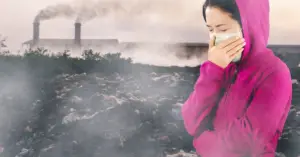 Air pollution by hydrocarbons often manifests itself in the form of photochemical smog. Hanging like a thick cloud over industrial areas, people sometimes confuse it …
Air pollution by hydrocarbons often manifests itself in the form of photochemical smog. Hanging like a thick cloud over industrial areas, people sometimes confuse it … - The Definition of Water Pollution; Water pollution effects and causes
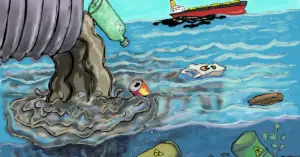 Water pollution, the accidental or intentional dumping of pesticides; herbicides; oil products; fertilizers; sewage; industrial waste; detergents; and other foreign chemicals and objects into aquatic …
Water pollution, the accidental or intentional dumping of pesticides; herbicides; oil products; fertilizers; sewage; industrial waste; detergents; and other foreign chemicals and objects into aquatic …The Definition of Water Pollution; Water pollution effects and causes Read More »
- What can pollution cause to humans and animals?
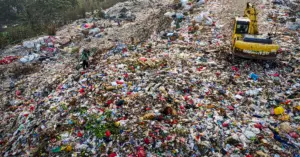 Pollution does not always lead to immediate mortality but instead can have sublethal impacts that compromise organisms’ fitness over time, with population declines as the …
Pollution does not always lead to immediate mortality but instead can have sublethal impacts that compromise organisms’ fitness over time, with population declines as the … - Why climate change is good?
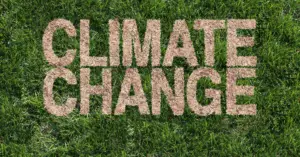 Generalist species with high genetic diversity and rapid reproduction are likely to benefit from climate change. Many species that exhibit these characteristics are carriers of …
Generalist species with high genetic diversity and rapid reproduction are likely to benefit from climate change. Many species that exhibit these characteristics are carriers of … - How does climate change affect habitat loss?
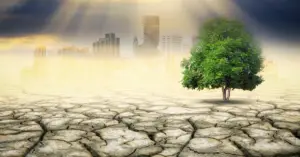 Climate change interacts with habitat loss, by impeding species’ ability to adapt, and by bringing dispersing wildlife into conflict with humans. Habitat loss and climate …
Climate change interacts with habitat loss, by impeding species’ ability to adapt, and by bringing dispersing wildlife into conflict with humans. Habitat loss and climate … - How climate change affects marine ecosystems?
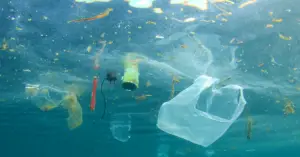 Climate change is causing sea-level rise and increased seawater temperatures, with broad implications for marine ecology and people living in coastal areas. Like rainforests, the …
Climate change is causing sea-level rise and increased seawater temperatures, with broad implications for marine ecology and people living in coastal areas. Like rainforests, the … - How does climate change affect aquatic life?
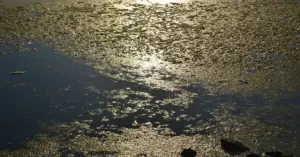 Climate change will alter water temperature, volume, and flow variability, the three main predictors of freshwater ecosystem composition. With Africa’s freshwater ecosystems already strained by …
Climate change will alter water temperature, volume, and flow variability, the three main predictors of freshwater ecosystem composition. With Africa’s freshwater ecosystems already strained by … - How are reptiles affected by climate change?
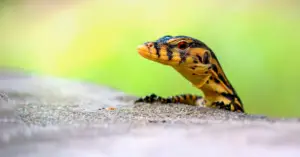 One may think that reptiles—often seen basking on sun-drenched rocks to obtain active body temperatures—may benefit from climate change. Yet, as a group, they are …
One may think that reptiles—often seen basking on sun-drenched rocks to obtain active body temperatures—may benefit from climate change. Yet, as a group, they are … - How is wildlife affected by climate change?
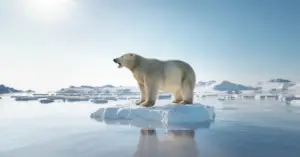 We can already see evidence of how climate change is affecting wildlife by disrupting migrations and mutualistic relationships that were developed over thousands of years. …
We can already see evidence of how climate change is affecting wildlife by disrupting migrations and mutualistic relationships that were developed over thousands of years. … - Dispersal and climate change
 In many different ecosystems, a large number of species are threatened by climate change due to poor dispersal capabilities. Lacking proper dispersal mechanisms, species such …
In many different ecosystems, a large number of species are threatened by climate change due to poor dispersal capabilities. Lacking proper dispersal mechanisms, species such … - How does climate change affect plains?
 The response of species living in lowlands and on plains tends to be more variable and complex than those living in mountains. While some species …
The response of species living in lowlands and on plains tends to be more variable and complex than those living in mountains. While some species … - Climate change on Mountains; How is climate change affecting the mountains?
 Species that live in the mountains are particularly threatened by climate change. Because the temperatures drop from about 0.65°C for every 100 min of elevation …
Species that live in the mountains are particularly threatened by climate change. Because the temperatures drop from about 0.65°C for every 100 min of elevation …Climate change on Mountains; How is climate change affecting the mountains? Read More »
- How are humans affected by climate change?
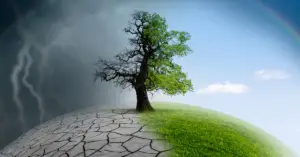 History provides us with many lessons to illustrate the impact of climate change on human societies. These lessons start with the earliest well-documented example of …
History provides us with many lessons to illustrate the impact of climate change on human societies. These lessons start with the earliest well-documented example of … - What causes the climate change?
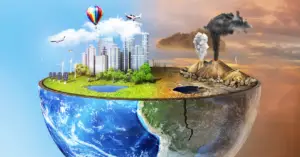 Threatening waves of heat, which drown coastal cities, and tens of thousands of displaced refugees … These words can very well describe a scene from …
Threatening waves of heat, which drown coastal cities, and tens of thousands of displaced refugees … These words can very well describe a scene from … - Sub saharan africa ecosystem
 Much of the African continent encompasses the Afro-tropical ecoregion, which is separated from other ecoregions by the Indian Ocean to the East, the Atlantic Ocean …
Much of the African continent encompasses the Afro-tropical ecoregion, which is separated from other ecoregions by the Indian Ocean to the East, the Atlantic Ocean … - Habitat loss in Africa
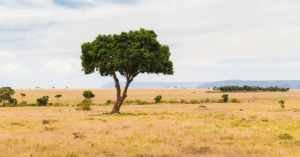 Habitat loss in rainforests Occupying about 7% of the earth’s total surface, tropical forests are estimated to contain more than 50% of the world’s terrestrial …
Habitat loss in rainforests Occupying about 7% of the earth’s total surface, tropical forests are estimated to contain more than 50% of the world’s terrestrial … - How habitat loss affects biodiversity?
 Habitat loss is defined as the total destruction of natural ecosystems, an inevitable consequence of expanding human populations and human activities. Island biogeography theory offers …
Habitat loss is defined as the total destruction of natural ecosystems, an inevitable consequence of expanding human populations and human activities. Island biogeography theory offers … - What is habitat fragmentation and how does it occur?
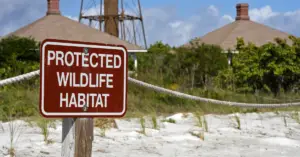 Habitat fragmentation creates small and isolated subpopulations that have fewer opportunities to find food, water, shelter, and mates and occurs due to human activities such …
Habitat fragmentation creates small and isolated subpopulations that have fewer opportunities to find food, water, shelter, and mates and occurs due to human activities such …What is habitat fragmentation and how does it occur? Read More »
- What does biomagnification mean? Biomagnification definition environmental science
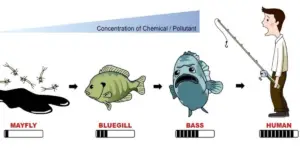 One of the major consequences of ecosystem dynamics relative to human influence is biomagnification. Biomagnification is the increasing concentration of persistent and toxic substances in …
One of the major consequences of ecosystem dynamics relative to human influence is biomagnification. Biomagnification is the increasing concentration of persistent and toxic substances in …What does biomagnification mean? Biomagnification definition environmental science Read More »
- Importance of biodiversity to ecosystem
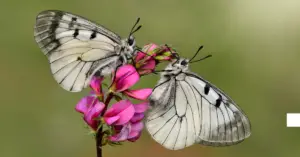 First, it is important because it represents the almost infinite diversity of plant and animal life and the diversity of types of ecosystems on Earth …
First, it is important because it represents the almost infinite diversity of plant and animal life and the diversity of types of ecosystems on Earth … - Ecotoxicology And Environmental Toxicology
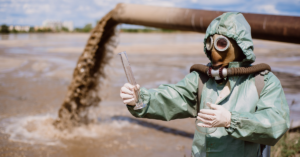 Effects of chemical pollution There are three main routes of exposure, or ways a substance can enter your body. • Breathing (inhalation): Inhalation of chemical …
Effects of chemical pollution There are three main routes of exposure, or ways a substance can enter your body. • Breathing (inhalation): Inhalation of chemical … - What are the different types of marine biomes?
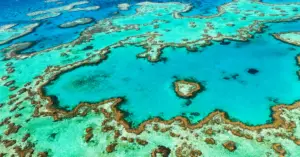 The ocean is the largest marine biome. It is a continuous body of saltwater relatively uniform in chemical composition mineral salts and decomposed biological matter. …
The ocean is the largest marine biome. It is a continuous body of saltwater relatively uniform in chemical composition mineral salts and decomposed biological matter. … - What are the freshwater biomes?
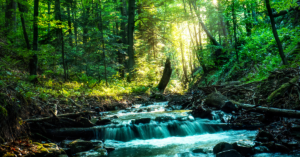 Freshwater biomes include lakes and ponds (stagnant water) and rivers and streams (flowing water). These include wetlands, which will be discussed later. LAKE AND PONDS …
Freshwater biomes include lakes and ponds (stagnant water) and rivers and streams (flowing water). These include wetlands, which will be discussed later. LAKE AND PONDS … - What is bioremediation process?
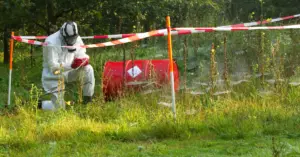 Bioremediation uses living organisms to remove or minimize contaminants from a polluted site. According to the US EPA, bioremediation is the treatment that uses natural …
Bioremediation uses living organisms to remove or minimize contaminants from a polluted site. According to the US EPA, bioremediation is the treatment that uses natural … - What is the biodiversity hotspot?
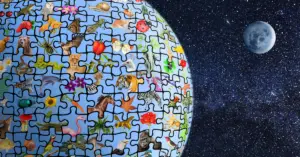 A biodiversity hotspot is a method of identifying regions of the world where special attention is needed to fighting against the loss of biodiversity and …
A biodiversity hotspot is a method of identifying regions of the world where special attention is needed to fighting against the loss of biodiversity and … - Biodiversity hot spots
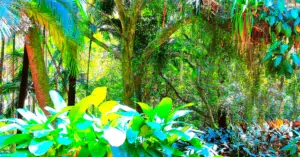 List of biodiversity hotspots around the world: North and Central America California Floristic Province Madrean Pine-oak woodlands Caribbean Island Mesoamerica North American Coastal Plain South …
List of biodiversity hotspots around the world: North and Central America California Floristic Province Madrean Pine-oak woodlands Caribbean Island Mesoamerica North American Coastal Plain South … - Biodiversity importance
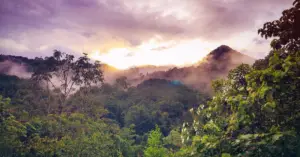 Biologists estimate that species extinctions are currently 500 to 1,000 times higher than the normal or background rate observed earlier in Earth’s history. Sometimes is …
Biologists estimate that species extinctions are currently 500 to 1,000 times higher than the normal or background rate observed earlier in Earth’s history. Sometimes is … - Simpson’s index of diversity
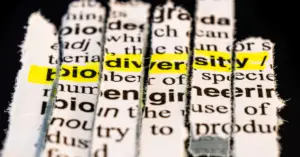 A community dominated by one or two species is considered less diverse than a community in which several species have similar abundance. The Simpson’s Diversity …
A community dominated by one or two species is considered less diverse than a community in which several species have similar abundance. The Simpson’s Diversity … - Conservation of the biodiversity
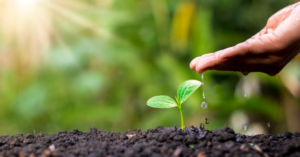 Biodiversity conservation is an extraordinary challenge that must be addressed through a better understanding of biodiversity itself, changes in human behavior and beliefs, and various …
Biodiversity conservation is an extraordinary challenge that must be addressed through a better understanding of biodiversity itself, changes in human behavior and beliefs, and various … - Threats to the biodiversity
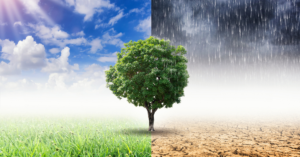 The main threat to the planet’s biodiversity, and therefore a threat to human well-being, is the combination of population growth and the resources utilized by …
The main threat to the planet’s biodiversity, and therefore a threat to human well-being, is the combination of population growth and the resources utilized by … - How organisms get energy?
 All living things need energy in one form or another. At the cellular level, energy is consumed in most metabolic pathways (usually in the form …
All living things need energy in one form or another. At the cellular level, energy is consumed in most metabolic pathways (usually in the form … - Advantage of geothermal energy
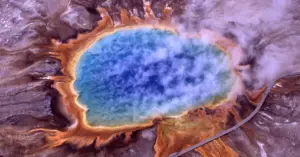 Geothermal energy benefits from the fact that the deeper you go into the earth’s crust, the warmer things get. About 50 to 87 Fahrenheit degrees …
Geothermal energy benefits from the fact that the deeper you go into the earth’s crust, the warmer things get. About 50 to 87 Fahrenheit degrees … - Threats to coral reef
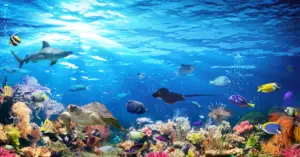 Human activities in coastline are known to have a number of negative impacts, both direct and indirect, on the natural environment, including coral reef ecosystems. …
Human activities in coastline are known to have a number of negative impacts, both direct and indirect, on the natural environment, including coral reef ecosystems. … - Population growth with carrying capacity
 Population ecologists are using various methods to model population dynamics. An accurate model should be able to describe changes occurring in a population and predict …
Population ecologists are using various methods to model population dynamics. An accurate model should be able to describe changes occurring in a population and predict … - Features of r programming language
 R is not only a program for data analysis. It has unique features that make it very powerful, probably the most important being the notion …
R is not only a program for data analysis. It has unique features that make it very powerful, probably the most important being the notion … - How many species are in the world?
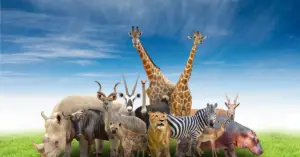 So far biologists have found about1.5 a million species living on this planet. While this total may seem impressive, the available evidence suggests that this …
So far biologists have found about1.5 a million species living on this planet. While this total may seem impressive, the available evidence suggests that this … - Definition of ecosystem diversity
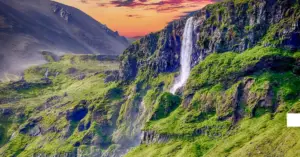 Those who have climbed the highest mountains in Africa have probably noticed how the flora and fauna present gradually change as one progresses from high …
Those who have climbed the highest mountains in Africa have probably noticed how the flora and fauna present gradually change as one progresses from high … - Population in ecology
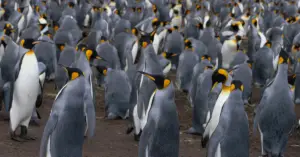 We can think of a population as a set of individuals of the same species living together at the same time and place. This statement …
We can think of a population as a set of individuals of the same species living together at the same time and place. This statement … - Effect of overfishing
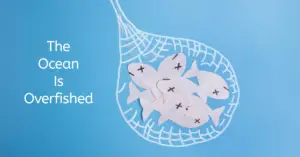 When we think of the destruction of the oceans, most people think of destruction from pollution. Although chemicals and plastics have a huge impact on …
When we think of the destruction of the oceans, most people think of destruction from pollution. Although chemicals and plastics have a huge impact on … - Oil spills into ocean
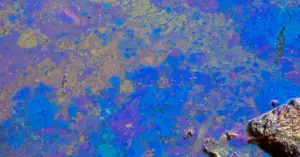 When oil spills occur, the primary organisms to come back into contact with the oil are the marine organisms. There are thousands of oil and …
When oil spills occur, the primary organisms to come back into contact with the oil are the marine organisms. There are thousands of oil and … - Rising sea levels and global warming
 When we talk about the warming of our oceans, it’s important to talk about global warming first. Global warming as a term describes a gradual …
When we talk about the warming of our oceans, it’s important to talk about global warming first. Global warming as a term describes a gradual … - What is the cause of coral bleaching?
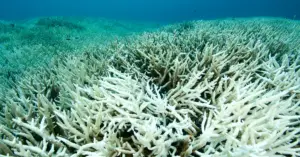 Coral bleaching is a phenomenon that occurs when corals turn white due to environmental stress. It is a recurring event that frightens marine biologists and …
Coral bleaching is a phenomenon that occurs when corals turn white due to environmental stress. It is a recurring event that frightens marine biologists and … - The effects of ocean acidification
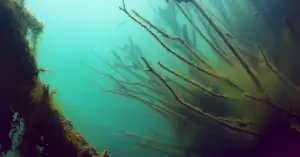 Ocean acidification is the lowering of the pH of all oceans on earth. The ocean absorbs about 25% of the carbon dioxide, or CO2, from …
Ocean acidification is the lowering of the pH of all oceans on earth. The ocean absorbs about 25% of the carbon dioxide, or CO2, from … - Coral reef symbiotic relationship
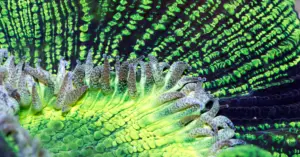 Coral reefs are home to many organisms such as sponges, fish including large nurse sharks and reef sharks, eels, snappers, parrotfish, jellyfish, groupers, clownfish, anemones, …
Coral reefs are home to many organisms such as sponges, fish including large nurse sharks and reef sharks, eels, snappers, parrotfish, jellyfish, groupers, clownfish, anemones, … - How the coral reef is formed?
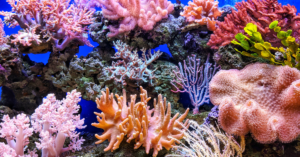 Scientists in the field of tropical marine biology have found that coral reefs are often divided into 3 types: fringing reefs, barrier reefs, and atolls, …
Scientists in the field of tropical marine biology have found that coral reefs are often divided into 3 types: fringing reefs, barrier reefs, and atolls, … - Toxic algal blooms
 Harmful blooms are caused by algae, simple aquatic plants that range from microscopic single-celled protists to colonial filamentous microalgae to large seaweeds, forming the base …
Harmful blooms are caused by algae, simple aquatic plants that range from microscopic single-celled protists to colonial filamentous microalgae to large seaweeds, forming the base … - The coral reef ecosystem
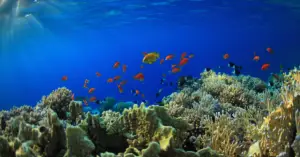 Coral reefs are large underwater structures found in tropical ocean waters around the world. They are among the most diverse and valuable ecosystems on the …
Coral reefs are large underwater structures found in tropical ocean waters around the world. They are among the most diverse and valuable ecosystems on the … - Global warming cause
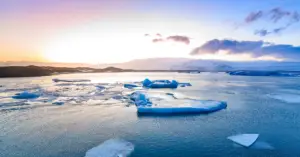 Pollution, overpopulation, and other human activities are having a major effect on the environment, by raising the earth’s temperature. The root cause is a phenomenon …
Pollution, overpopulation, and other human activities are having a major effect on the environment, by raising the earth’s temperature. The root cause is a phenomenon … - Biome desert
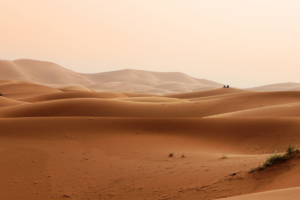 Subtropical deserts exist between 15o and 30o north and south latitude and are centered on the Tropic of Cancer and the Tropic of Capricorn. Deserts …
Subtropical deserts exist between 15o and 30o north and south latitude and are centered on the Tropic of Cancer and the Tropic of Capricorn. Deserts … - Biome Taiga
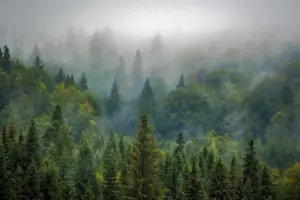 The boreal forest, also known as taiga or coniferous forest, is found between approximately 50° and 60° north latitude in most of Canada, Alaska, Russia, …
The boreal forest, also known as taiga or coniferous forest, is found between approximately 50° and 60° north latitude in most of Canada, Alaska, Russia, …
